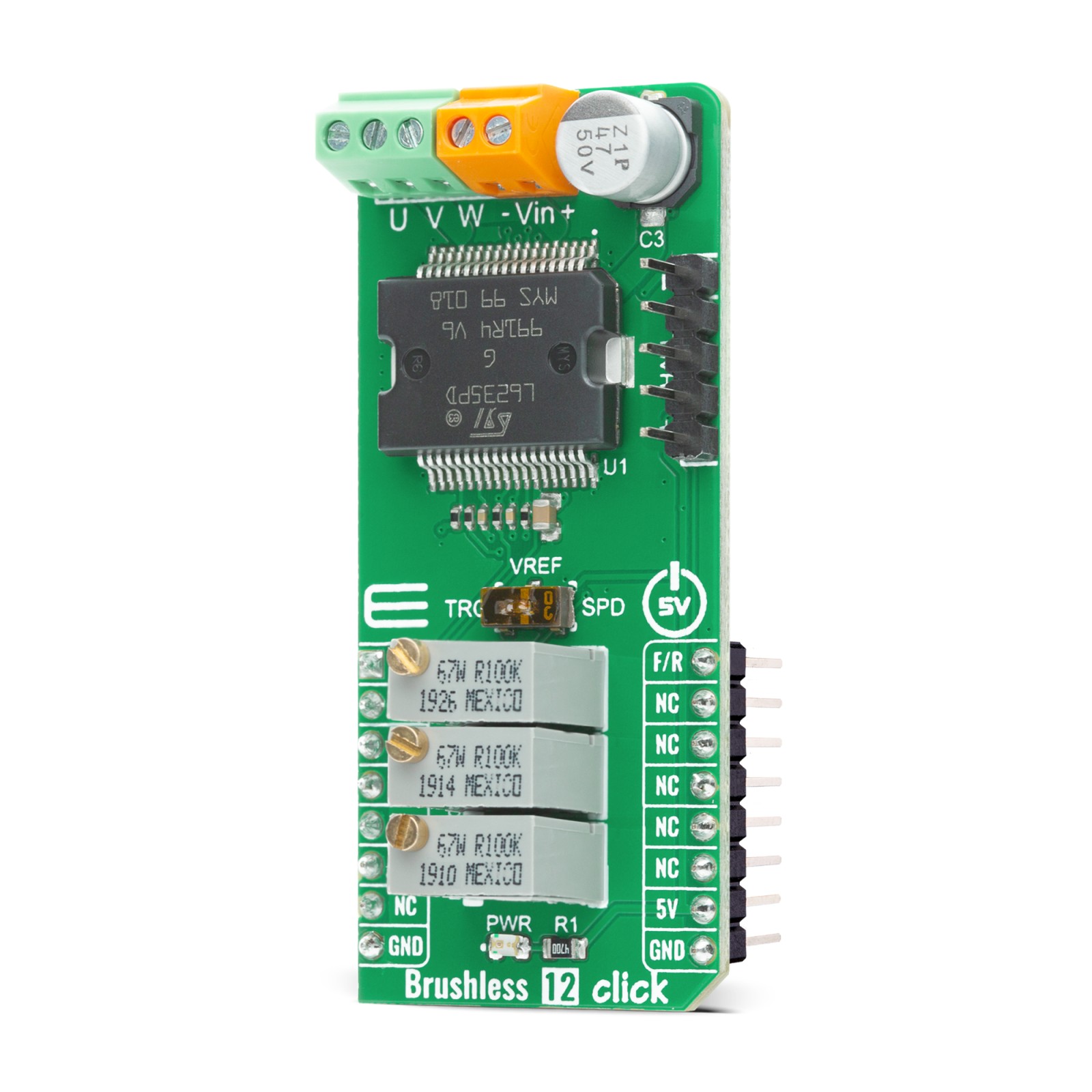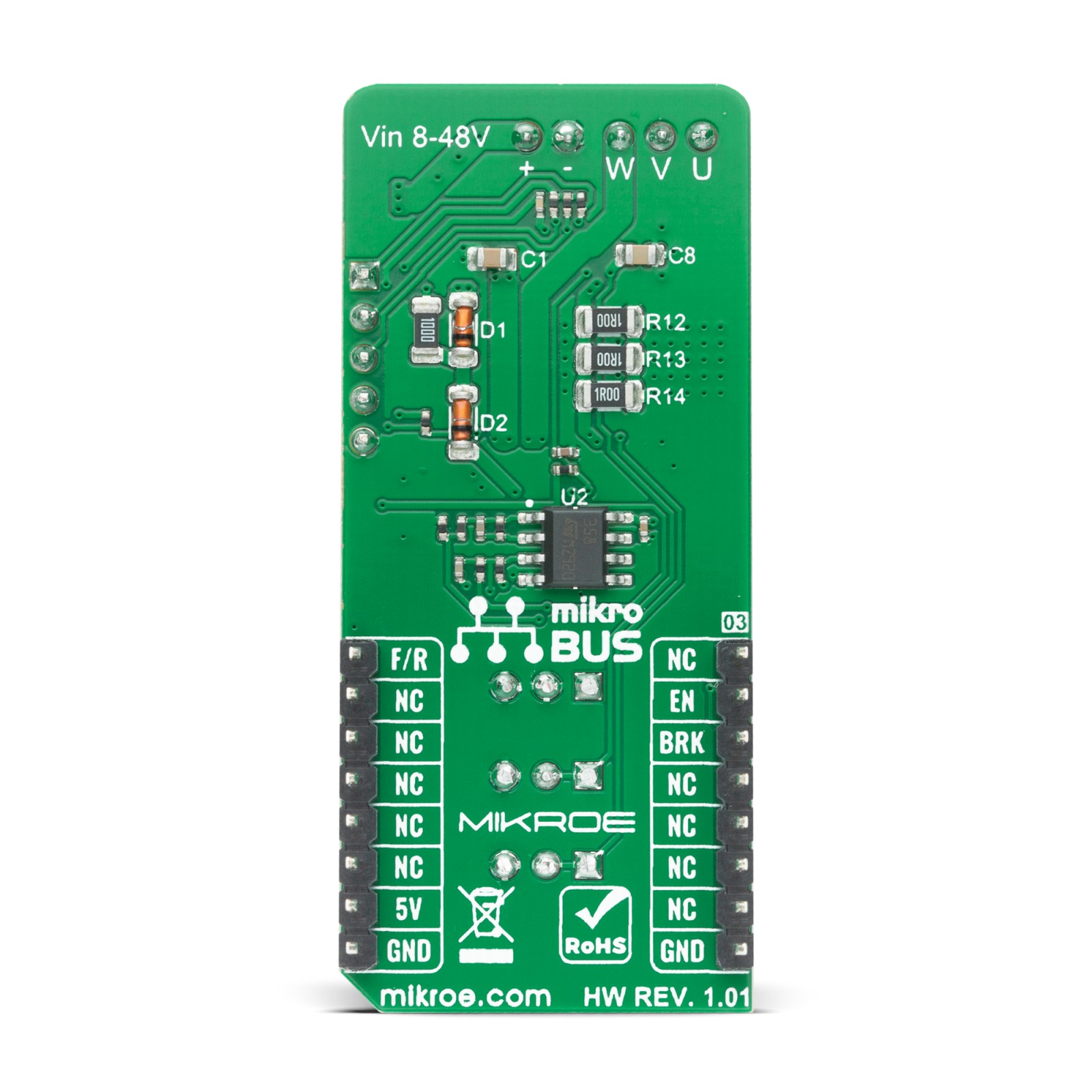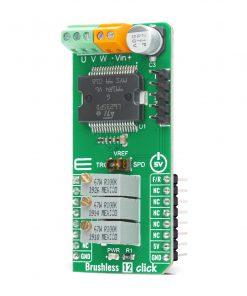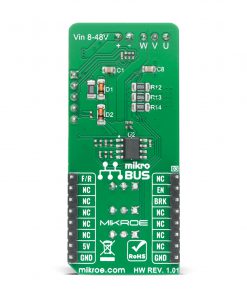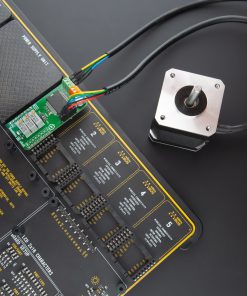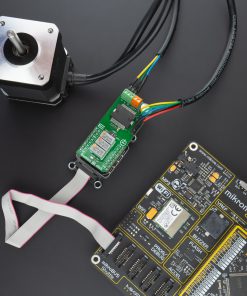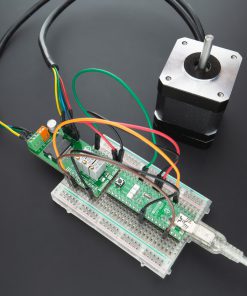Brushless 12 Click is a compact add-on board suitable for controlling BLDC motors with any MCU. This board features the L6235, DMOS fully integrated 3-phase motor driver with overcurrent protection from STMicroelectronics. The L6235 combines isolated DMOS power transistors with CMOS and bipolar circuits on the same chip. It features a non-dissipative overcurrent protection on the high-side power MOSFETs and thermal shutdown and includes all the circuitry needed to drive a 3-phase brushless DC motor. This Click board™ makes the perfect solution for small home appliances, robotics, battery-powered systems, small cooling fans, and many more.
Brushless 12 Click is supported by a mikroSDK compliant library, which includes functions that simplify software development. This Click board™ comes as a fully tested product, ready to be used on a system equipped with the mikroBUS™ socket.
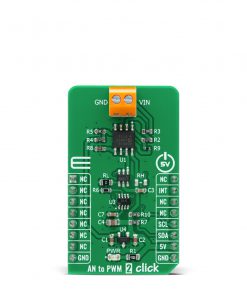 AN to PWM 2 Click
1 × R715.00
AN to PWM 2 Click
1 × R715.00 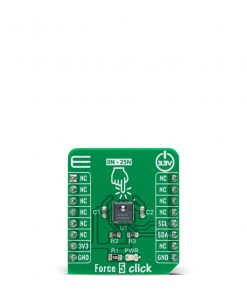 Force 5 Click
1 × R1,500.00
Force 5 Click
1 × R1,500.00  RTC Click
1 × R395.00
RTC Click
1 × R395.00 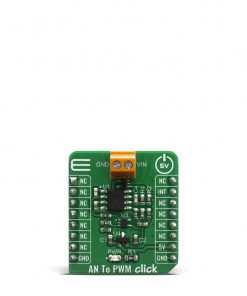 AN To PWM Click
1 × R265.00
AN To PWM Click
1 × R265.00 

